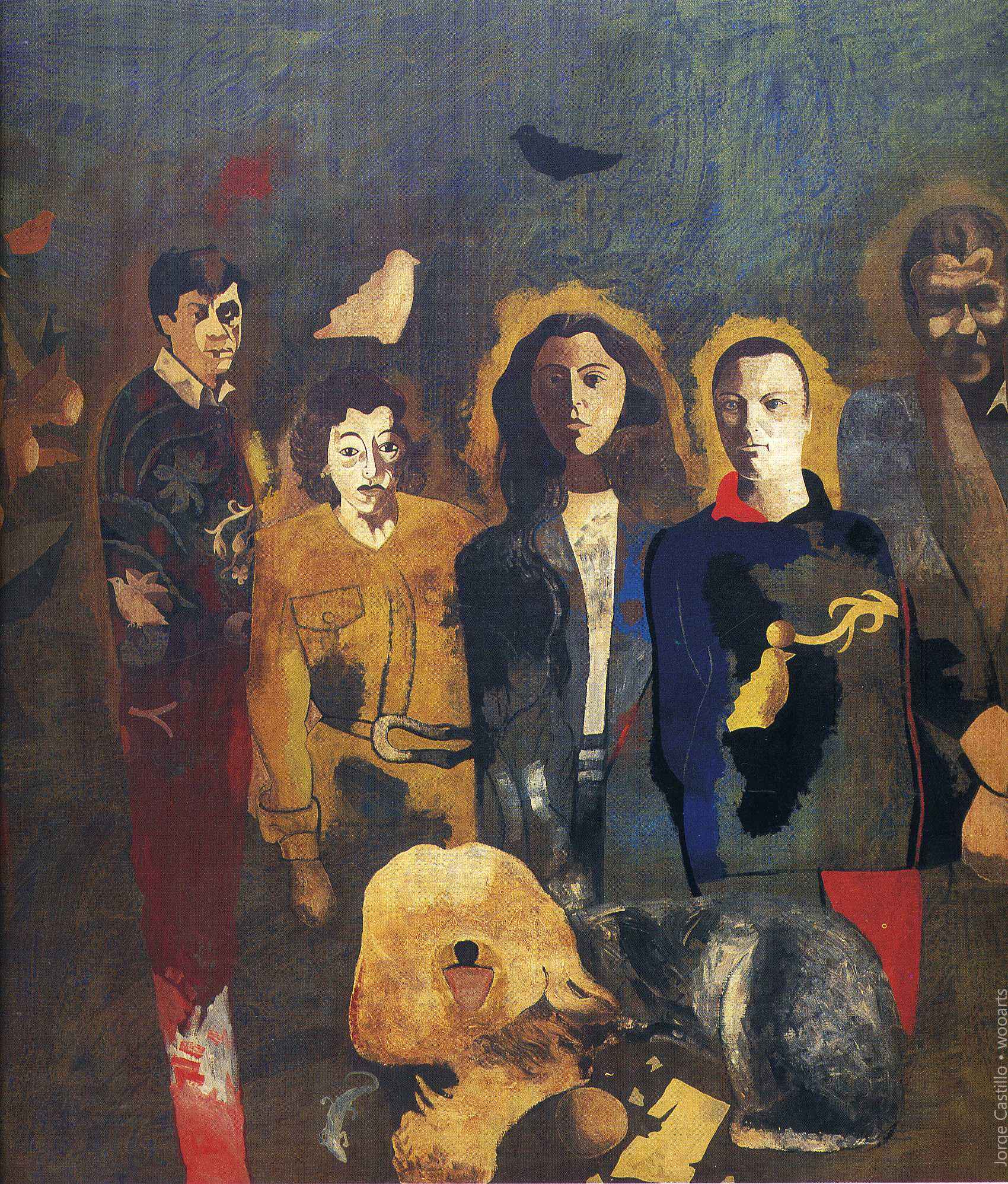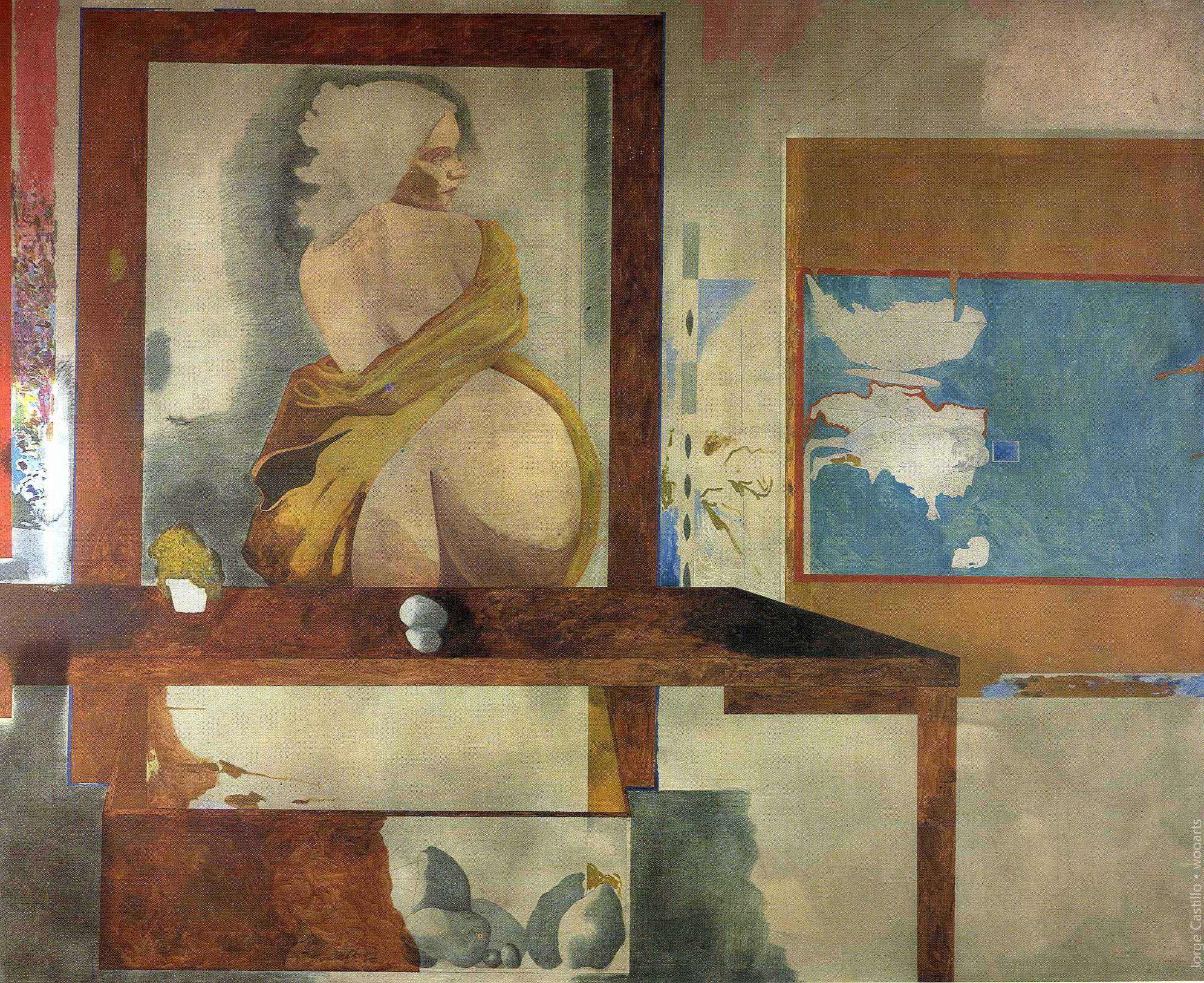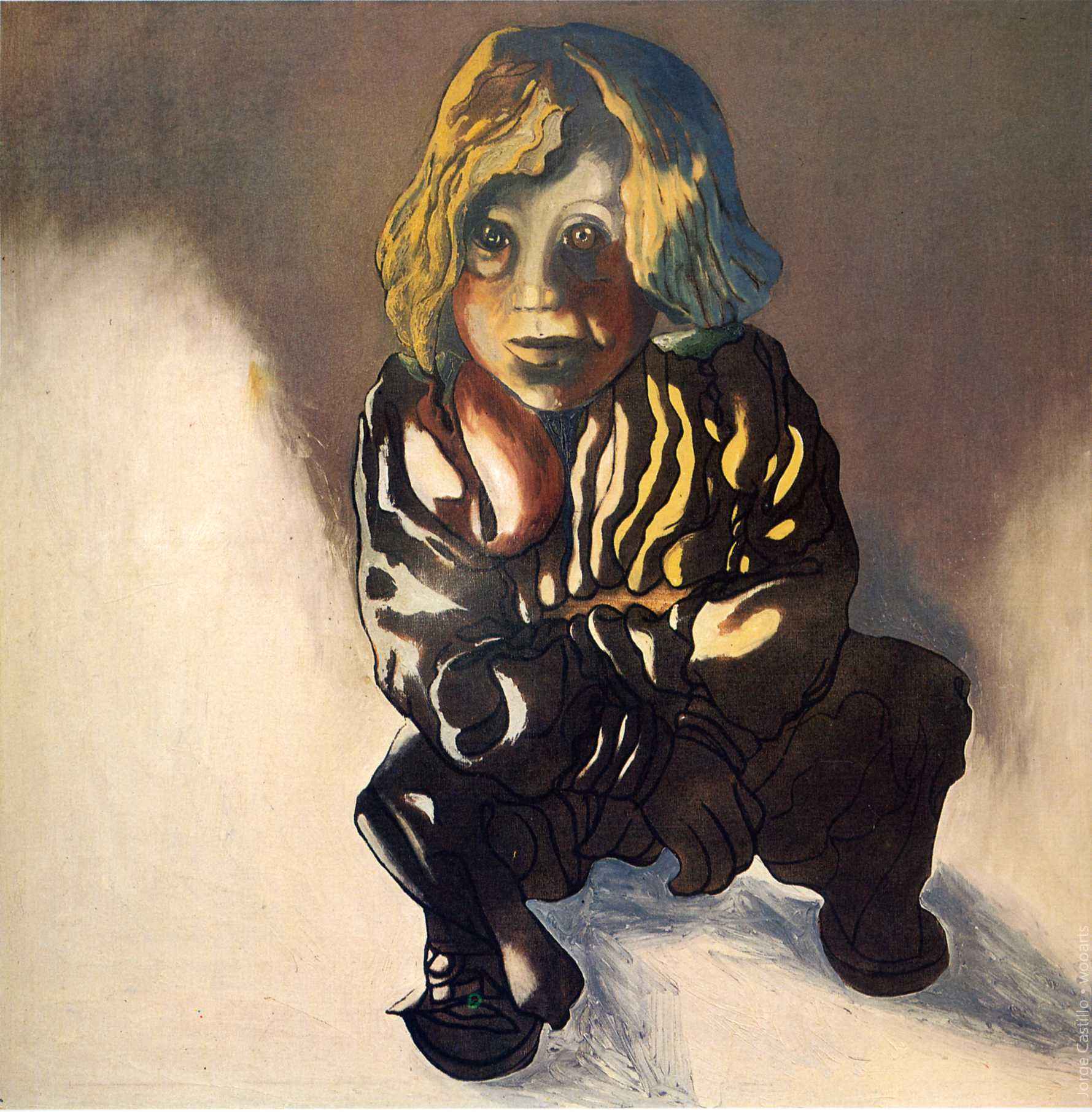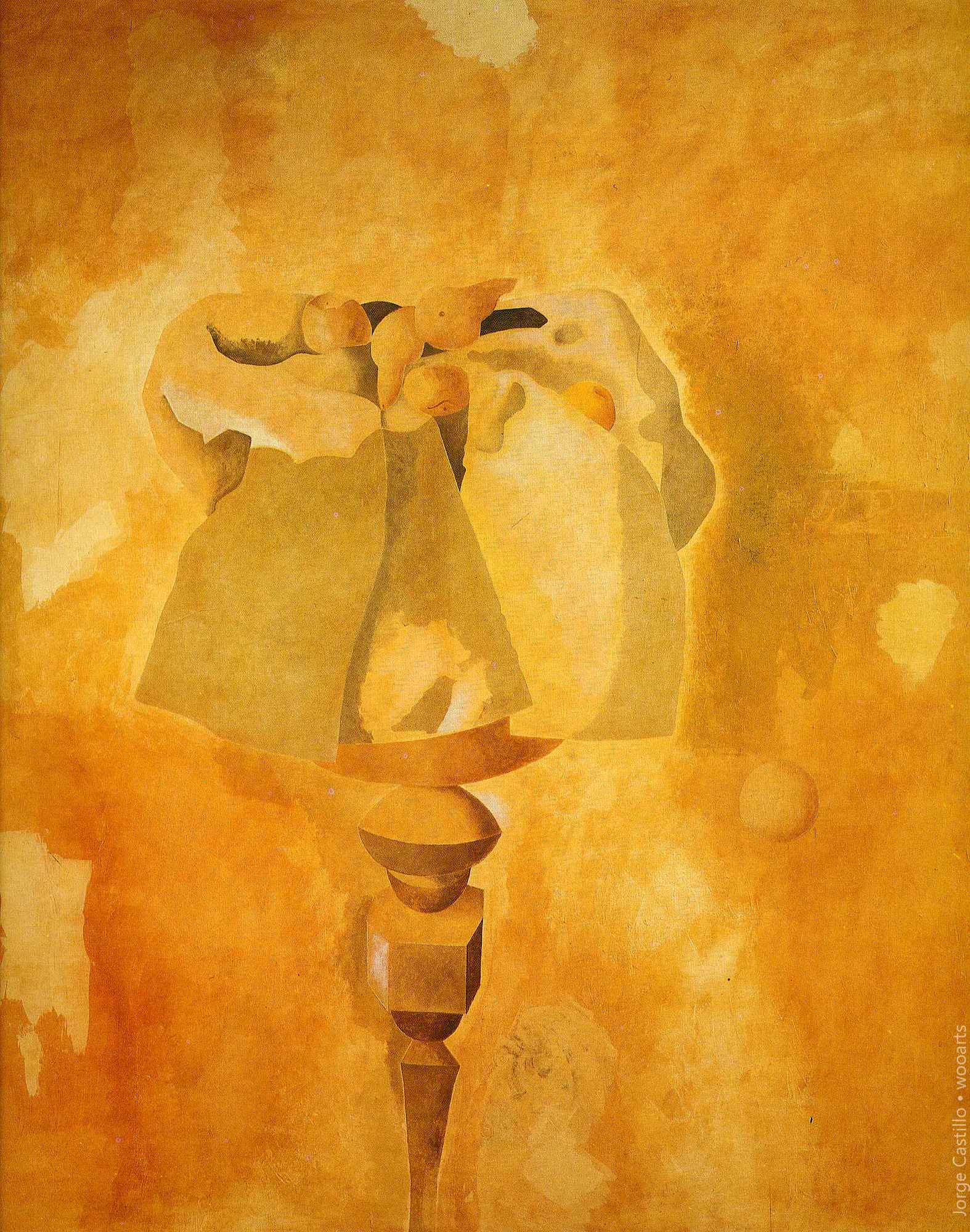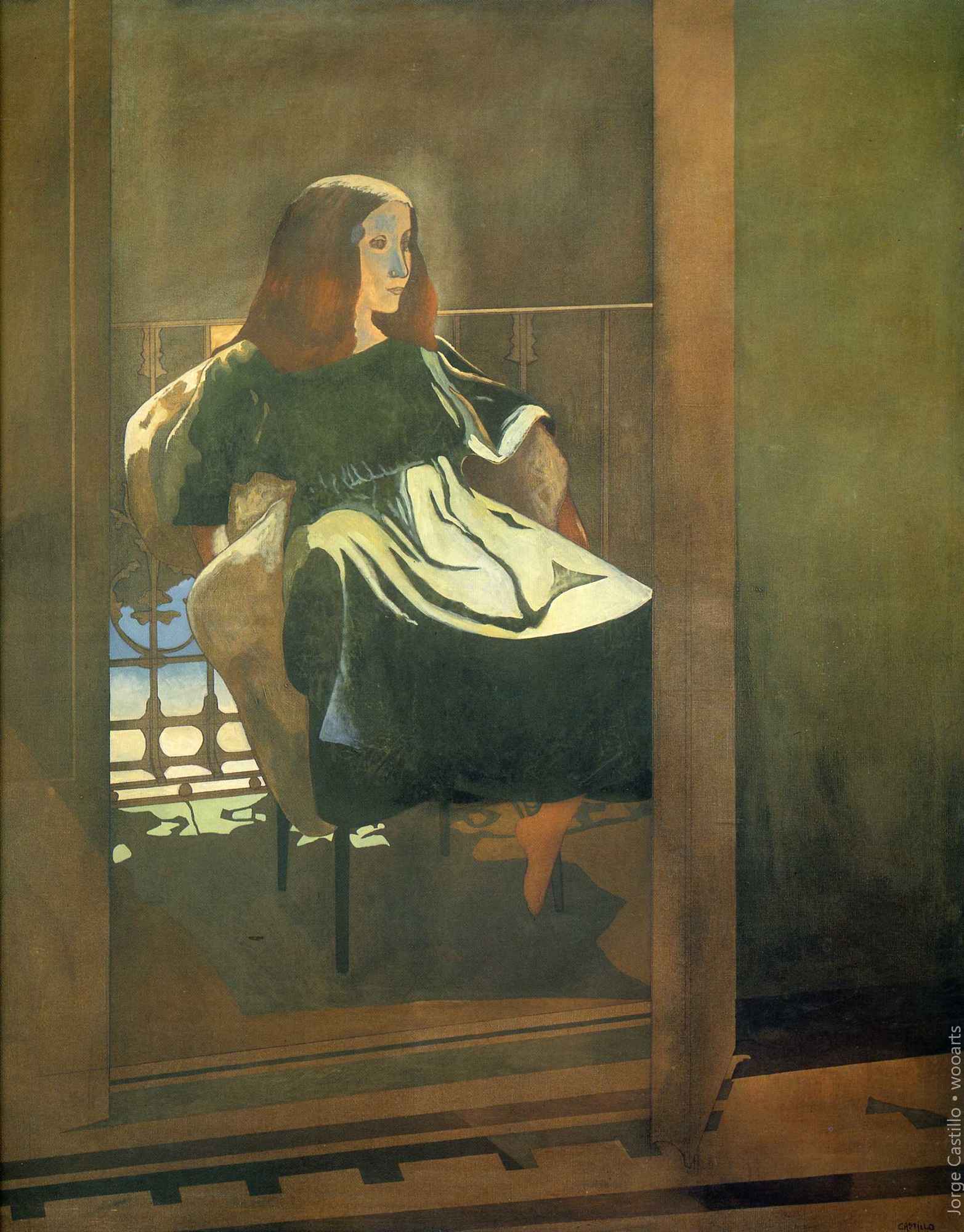Castillo greatly admired Pablo Picasso, and that influence shows in his paintings, etchings, and lithographs. His steel sculpture Homage to the Cyclist stands in the Plaça de Sants in Barcelona.
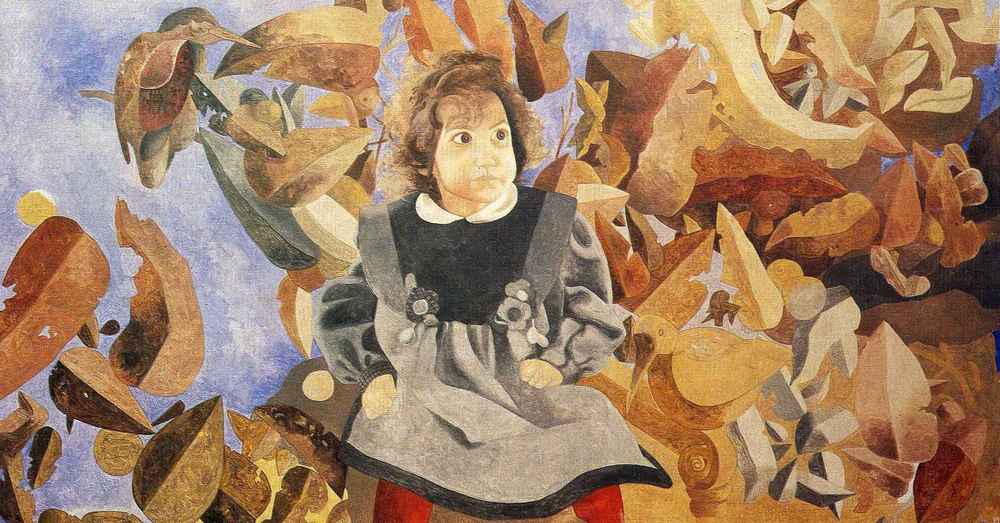
Wikipedia
The Spanish painter, graphic artist and sculptor Jorge Castillo was born in Pontevedra in the Spanish province of Galicia in 1933. Only one year after his birth his family emigrated to Argentina for political reasons. Castillo spent his childhood and youth in Buenos Aires. He produced his first autodidactic artwork at a young age. After he had taken part in a competition in 1941 Castillo was admitted to the “Ecole des Beaux-Arts” in Buenos Aires. But he left the school a short time later because he did not agree with the way the school worked.
In 1948 he began an apprenticeship in technical drawing and educated himself auto didactically. His acquaintance with the Argentine Surrealist Raquel Forner led to a close collaboration of the two artists.
In 1955 Jorge Castillo returned to Spain, where he first lived in Madrid. During that time he worked on Surrealistic ink drawings and gouaches. In 1959 he presented these in his first exhibition at the Galería Altamira in Madrid.
In the early 1960s Castillo moved to Barcelona, followed by a two-year sojourn in Paris. With his move to Geneva in 1966 he had the opportunity to work with printed graphics. His work in Geneva was interrupted by long summer sojourns to Boissano on the Ligurian coast. His most important etching sequences such as “El mundo de Frederico García Lorca” (1972) and “Grands amants” (1973) were produced during the subsequent years.
After an incident with an American nuclear bomb above the Spanish village of Palomares, the artist was inspired to produce a monumental triptych composition. This piece brought him international recognition and had him invited to the Kassel “documenta” a year later. With a scholarship from the “Deutscher Akademischer Austauschdienst” Jorge Castillo went to Berlin in 1969, where he enlarged his his oeuvre, not to return to Barcelona until 1975.
Since the early 1980s Castillo has lived in New York, where he was commissioned to create public sculptures in La Coruña, Messina and Barcelona.
Jorge Castillo is one of the most important Spanish exponents of Surrealism and Art informel. He is highly respected throughout Europe, South America and the USA. Since 1959 Jorge Castillo has received numerous awards. In 1964 and 1968 he contributed to the São Paulo and Venice Biennales. In 1964 Castillo won the International Drawing Prize in Darmstadt, Germany. Among other finalists were Henry Moore, Jean Dubuffet and Alberto Giacometti. Expressing his admiration for younger artist, Giacometti added that Castillo would make a good sculptor. “He was very generous,” says Castillo. “Very encouraging.” The following year, galleries in Switzerland, Germany and Italy presented one-man shows of Castillo´s work.
Carter Ratcliff, world famous art critic, writer and poet has the following to say about Jorge Castillo and his art work.
“The modernist tradition encourages painters to devise their own genealogies. Castillo has made his own particularly complex, giving himself the task of reconciling Surrealism biomorphism, for example, with Euclidean clarities of geometric abstraction. His synthesis includes Velázquez and Goya, Max Ernst and Picasso, and many others. One can see his forebears in his art, ghostly presences who have suggested this or that formal possibility. Yet we don´t see very far into Castillo´s art if we only look for its stylistic sources. We must see how he has transformed those sources, to a far greater degree than he himself has ever claimed.
Castillo´s struggle for historical synthesis displays on a grand scale the desire that animates his metaphors, his repetitions, his union of forms, temporal modes and varieties of pictorial space. Under pressure from that desire, he forgets the past so that it may insinuate itself into the present; he remembers the past to free the present from the burden of his attention. As Castillo trains his attention on all that he wishes to synthesize, he distracts himself from the unifying processes that have already taken place – much as he immerses himself in the spectacle, the idea, of New York, to let the work of painting achieve an unimpeded rhythm.
A distinctive light fills each of Castillo´s canvases, bringing with it a particular quality of weather – or of felling. This emotional weather may draw our attention to one or another aspect of his world, persuading us to ignore the rest. Or meteorological extremes may render much of the world invisible. Yet it is always there, complete. The imaginary regions mapped by Castillo´s paintings are entirely present in every painting. His drive toward synthesis ensures this fullness, thought the emotional climate of a particular canvas may make it difficult to see. Another canvas will reveal more, for each contains all the rest – not literally, of course, but implicitly.
Enter Castillo´s art at any point, the visionary labyrinth eventually brings one to every other point. Darkness generates light, past illuminates present. The monumental paintings like ”Broadway” show Castillo´s still lives transformed by the powers of abstraction. The still lifes reinvent his portraits. The portraits form the swirling currents of ”Broadway” into human shapes, as Castillo´s silhouettes abbreviate the realism of his portraiture, his realism produces hieroglyphs, the hieroglyphs become silhouettes.
When Castillo talks of synthesis, he mentions only the names of artists and their styles. Yet he synthesizes much more, including flesh and marble, the delicacy of birds and the weight of architecture, tangible objects and the phantasms of memory. Castillo´s remarks about the archaic past must be heard as commentary on his own childhood, just as his images of Taggio must be seen as reinventions of his early self. Castillo speaks of synthesis as a project still to be achieved, forgetting the astonishing unities that have already occurred in his art – forgetting so that the medium itself can find its way into the present where the synthesis continues.”
”Castillo”. Carter Ratcliff. Ed Rizzoli. N.Y. 1986
Solo exhibitions
2016.
Galeria Leandro Navarro, Madrid, Spain
2015.
Cervantes Institute, Stockholm, Sweden
2012.
Galleri MDA, Helsingborg, Sweden
2010.
Galeria Leandro Navarro, Madrid, Spain
2007.
-9 Montcada Art, Barcelona, Spain
2006.
-Premio nacional Cultura viva de artes plasticas, Madrid, Spain
2005.
– Visiones y Sugerencias: exposicion colectiva en homenaje al Quijote, Instituto Cervantes
– I Feria Internacional de Arte de Marbellla, Malaga, Spain.
– Galeria Joan Prats, Barcelona, Spain.
– Galeria Cyprus, Girona, Spain.
2004.
– Obra Reciente: Galeria Trece, Ventallo, Spain.
– Obra Reciente: Casa de las Artes, Vigo, Spain.
– Obra Reciente: Museo Provincial de Lugo, Lugo, Spain.
– Obra Reciente: Museo Provincial de Lugo, Lugo, Spain.
– Obra Reciente: Centro Cultural Diputacion Ourense, Orense, Spain.
2003.
– Feria de ARCO, Madrid , Spain.
– Feria de Basilea. Switzerland
– Galeria Trama, Barcelona. Spain
2002.
– Feria de ARCO, Madrid, Spain.
– Feria de Basilea, Switzerland.
2001.
– Feria de Basilea, Switzerland.
– Retrospectiva Centro Gallego de Arte Contemporaneo, Santiago de Compostela. Spain.
2000.
– Feria de Basilea, Switzerland.
1999.
– Feria de Basilea with Gallery Jan Krugier, who had three separate rooms, one for Picasso, one for Paul Klee and one for Castillo.
– Galerie Dittmar, Berlin, Germany.
1996.
– Galeria Alfama, Madrid, Spain.
1995.
– Feria de ARCO, Madrid, Spain.
– Caixa Vigo, Vigo, Spain.
– Caixa Ourense, Orense, Spain.
– Retrospectiva Teatro Principal, Pontevedra, Spain.
– Galeria Jalon, Zaragoza, Spain.
– Galeria Oda-Antic, Barcelona, Spain.
1994.
– Feria de ARCO, Madrid, Spain.
– Galeria Anselmo Ã?lvarez, Madrid, Spain.
– Galeria Alameda. Vigo, Spain.
1993.
– Casa de Galicia, Madrid, Spain.
1992.
– Malborough Gallery, New York, USA.
– Sociedade a Nosa Galizia, Geneve, Switzerland.
1991.
– Retrospectiva Kunstmuseum, Bochum, Germany.
– Fondation Veranneman, Kruishoutem, Belgium.
– Galeria Trece, Ampurdan, Gerona. Spain.
1990.
– Exposicion Antologica Palacio de la Virreina, Barcelona, Spain.
– Museo de Pobo Galego, Santiago de Compostela, Spain.
– Casa de la Parra, Santiago de Compostela, Spain.
– Stiching Fondation Veranneman, Kruishoutem, Belgium.
– Galeria Joan Prats, Barcelona, Spain.
1989.
– Marlborough Gallery, New York, USA.
– Retrospectiva ‘The Meadows Museum’, Dallas, Texas, USA.
1988.
– Stichting Fondation Veranneman, Kruishoutem, Belgium.
– Bienal de Pontevedra. Spain.
1987.
– Malborough Gallery, New York, USA.
– Galeria Fernando Quintana, Bogota, Colombia.
– Galeria Fernando Quintana, Bogota, Colombia.
– Instalacion de la gran escultura publica ‘El Ciclista’, Barcelona, Spain.
– Galeria Levi, Hamburg, Germany.
Works in Museums and Collections:
– Carnegie Institute, Pittsburgh, USA.
– Solomon R. Guggenheim Museum, New York, USA.
– San Francisco Museum of Modern Art, San Francisco, USA.
– Albertina Museum, Viena, Austria.
– Museum des 20, Jahrhundetts, Viena, Austria.
– Ausstellungshallen Mathildenhohe, Stadtische, Germany.
– Kunstsammlung und Stadtmuseum, Darmstadt, Germany.
– Kolnischer Kunstverein, Cologne, Germany.
– Kunsthalle, Bremen, Germany.
– Kunstmuseum, Essen, Germany.
– Kunstverein fur die Rheinlande und Westfalen, Dusseldorf, Germany.
– Kunstmuseum, Bochum, Germany.
– Museum am Ostwall, Dortmund, Germany.
– Nationalgalerie, Berlin, Germany.
– Fundacion March, Madrid, Spain.
– Kiosco Alfonso, La Coruña, Spain.
– Museo de Vitoria, Vitoria, Spain.
– Biblioteca Nacional de España, Madrid, Spain.
– Museo de Pontevedra, Pontevedra, Spain.
– Museo Castrelos, Vigo, Spain.
– Museo Carlos Maside-Sada, La Coruña, Spain.
– Plaza de Sants, Barcelona, Spain.
– Centro Galego de Arte Contemporanea, Santiago de Compostela, Spain.
– Cabinet Des Estampes du Musee d’Art et d’Histoire, Geneva. Switzerland
– Musee Cantonal des Beux-Arts, Lausanne, Switzerland.
– Musee d’Art d’Histoire, Fribourg, Switzerland.
– Archer M. Huntington Art Gallery, University of Texas at Austin, USA.
